Optimization of Gems
Colored gemstone bead can be found is every shade of the rainbow from clear Crystal Quartz to juicy orange Mandarin Garnet to the classic royal purple of Amethyst. Learn more about gemstone bead treatments.
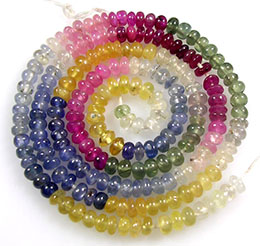
Dyed: Sometimes, stones will undergo certain processes to enhance natural coloration or make them a different color completely. Dying is just one of the processes used to change or alter the color of stones. Dying is achieved by mixing a solvent soluble dye with a suitable solvent so that the dye may be absorbed through the pores in the stone.
The dying process may be most evident in stones that have cracks, blemishes or inclusions as the dye will pool, collect and darken in these areas. The most commonly dyed stones are Jaspers, Agates, Quartz, and Jades as they are prevalent and easy to penetrate with various dyes. Clear Crystal Quartz and natural Banded Agates offer up a great blank canvas for dying and in the Bead market you will see many stones that exhibit exotic colors, but more often than not, expect them to be dyed.
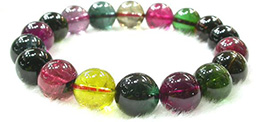
Heat Treated: Heat treatment is a common process that many stones undergo to enhance or change their natural color. This process may be used to bring out a fainter color that is naturally exhibited or to change a stone from one color to another. The process uses different temperatures of heat dependent on the type of stone being treated. In the industry, most stones are heat treated in well regulated kilns, and brought to particular temperatures which produce the color change or enhancement. A great example of this is Citrine. Most Citrine on the market is actually heat treated Amethyst.
Many Sapphires, Rubies, Emeralds, Topaz, and Aquamarine are heat treated in the gem and Bead industry.
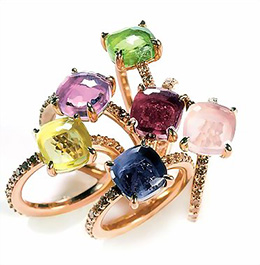
Irradiated: Irradiation is another common enhancement treatment used in the industry. This process, as well as heat treatment, is often utilized to enhance color; however it is best known for its ability to remove imperfections from gemstones and pearls and improve surface luster. The irradiation process consists of the object being exposed to radiation and much care is taken in this treatment process. Some of the most commonly Irradiated stones on the market are all the forms of Blue Topaz, which generally start out as a clear stone, and Green Colored Quartz. Pearls are also very commonly Irradiated in their processing as well.
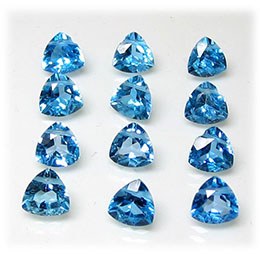
Reconstitution: Reconstitution is the process of taking the powder, chips or small pieces of a low grade stone and bonding them together with a plastic resin to make a large block. The block then can be cut into beads and cabochons and made into jewelry. Some people argue that these cannot be considered “real” stone because of the resin content inside the finished pieces. Reconstituted stones are often dyed as well to achieve a desired color since the stones typically used in this process are of poor quality. However, reconstituted stones can exhibit a beautiful mosaic like quality when finished into beads.
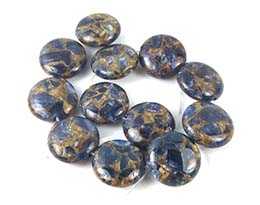
Stabilization: Stabilization is the process of impregnating or sealing a stone with wax, resin, or plastic to give it durability and strengthen weak or porous stones. The most common example in which we see stabilization is Turquoise. By nature, certain stones are too brittle to be worn as jewelry so this process allows us to actually wear and use these stones for such purposes. The process usually involves submerging the porous stone in a bath of liquid resin and allowing the stone to soak up this material. Once the resin has dried and hardened within the stone, it can be cleaned, cut and polished into beads or cabochons for jewelry.


Comment (0)